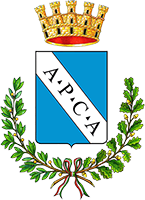
St. Francis, during its continuous pilgrimages in the Umbrian territory, visited both Amelia and some surrounding localities, leaving traces of his enlivening presence and his work. Here in Amelia, the Churc of S.Francesco was built in 1287, to which, in the XIV sec., the Convent of the friars Minors was annexed. Inside the church, on the right, the Chapel of Sant’Antonio hosts the remarkable funeral monuments of the Geraldini family, in particular those of Matteo and Elisabetta by Agostino di Duccio (1477).
Leaving the church, on the right, you can access, through a beautiful Renaissance portal, to the former Collegio Boccarini, which today hosts the Civic Archaeological Museum and Art Gallery “E.Rosa”, where the famous statue of Germanicus can be admired.
The Church of “Santa Maria Delle Cinque Fonti”, which dates back to the fifteenth century, with subsequent changes, owes its name to the presence, in the immediate vicinity, of five medieval arches containing five founts, unfortunately now incorporated by modern superstructures. Tradition has it that the Church was erected in memory of a conversion made by Saint Francis in this place in 1213.
The exterior of the building, quite simple, has a facade characterized by two windows called “wayfarer”: they allowed to follow the mass also from outside. Inside there are some valuable fresco paintings; on the high altar the Holy Mary with child, on the sides the “Saints Rocco, Cristoforo and Sebastiano”, without any doubt the most ancient work.
The Convent of “SS.Annunziata”, dipped in the green of a holm-oak wood just a few kilometers from Amelia, is the most well-known and the most ancient Franciscan Convent of the whole Amerino’s territory. The first inhabited nucleus was of hermits. The church, which can be accessed through a beautiful cloister, hosts one of Bruschi’s Annunciations.
Originally, the church preserved the famous “Gardner Annunciation”, painted in 1481 by Pier Matteo d’Amelia, now exhibited in the Gardner Museum in Boston. In the cloister, visitors can admire a permanent plaster Nativity Scene by the famous Spanish artist Juan Marì Oliva, in collaboration with Carlo Chiappafreddo. In 1989, the convent has been enriched by a planetarium, which reproduces different astronomical phenomena.
The Convent, a few kilometers from the city center, is in an admirable panoramic position immersed in the silent green of a forest. Formerly a hospice for pilgrims and sick people (1156), then it hosted the nuns of “San Magno”, until the XVI century (1550), when the complex (known as “San Giacomo de Redere”) passed to the Capuchin Friars Minor.
Recently enlarged and renovated, it can accommodate pilgrims and tourists eager to restore their spirit. In the church you can admire, together with a beautiful canvas, probably realized by the artist Piazza, depicting “The Madonna with Saints”, a remarkable “wooden crucifix” placed in the choir, and a precious painting of “The Last Supper”, placed in the refectory. At the center of the cloister, a modern statue of St. Francis of Assisi has recently been placed, a work of the sculptor Aurelio De Felice.


